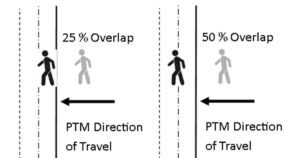Insurance Does Not (and will not) Make AVs Acceptably Safe
I frequently hear arguments that insurance will make autonomous vehicles (AVs) safe. For example, : “the insurance company issued a policy, so the AV must be safe,” and “economic pressure from insurance premiums will ensure safety.” While it is true that insurance premium pressure (and companies) will mitigate egregiously dangerous AVs, they have nowhere near enough power to enforce safety acceptable to many stakeholders in an industry of risk-takers chasing a trillion-dollar market.
Insurance
policies do not make you safe
Getting an
insurance policy does not mean you are objectively “safe.” You can insure
plenty of things that might be considered risky by everyday standards:
skydiving injury insurance, commercial rocket launch payload insurance, marine
piracy insurance, and life insurance for
front-line military personnel are all routinely issued.
An
insurance company issuing a policy does not mean any particular activity in
general or AV in particular is objectively safe. Rather, it means that the
insurance company thinks it understands the risks well enough to set a policy
rate that is, on average, economically attractive (profitable to the insurance
company) across the members of the risk pool.
Taking a
lot of risk? Expect a higher premium. But you will still get an insurance
policy for high-risk activities so long as the insurance company feels
comfortable it can estimate likely future losses and charge accordingly.
To be sure,
the insurance industry does support improving safety. Historically, the
insurance industry has spawned activities to create safety standards and help
their customers manage risks.
Organizations such as the Insurance Institute for Highway Safety (IIHS)
are both active and vocal in support of vehicle automation safety. Insurance
companies typically have a loss prevention activity to support their clients as
well. So these remarks should not be interpreted as indicating industry
disregard for safety.
Nonetheless,
the economic reality of the situation is that you can get insurance for
activities that are objectively dangerous so long as you are willing to pay the
required premium. With a multi-billion dollar war chest for AV development and
aggressive timelines to deploy, reducing insurance costs is nowhere near the
top budget item of concern until well after deployment. Higher insurance
premiums are unlikely to drive safety improvements very hard until the industry
is operating at significant scale. And even then, other issues discussed
regarding risk mitigation incentives will still apply.
Low
premiums do not necessarily mean low harm
A crucial
aspect of insurance for vehicle crashes is that total cost of insurance bundles
together harm to people as well as property damage. For personal policies the
contributing costs are broken out into several categories. But if you are tracking
business profitability what matters is the total insurance cost, which includes
both harm to people and property damage. If the property damage risk far outweighs
the risk of harm, there is reduced economic pressure to mitigate harm to people.
An
everyday example of divergence between insurance premiums and fatality rates
can be seen in motorcycles.
Overall,
motorcyclists account for 14% of all traffic fatalities, with those fatalities
occurring nearly 27 times more frequently than for passenger cars on a per-mile
basis.
Even though motorcycles are 27 times more dangerous in terms of risk of death
per mile, motorcycle insurance costs about half that of car insurance. This
difference is attributed to motorcycle crashes causing much lower equipment
damage bills (both to the motorcycle and any other vehicle hit) that more than
offset the cost of increased fatalities.
Based on
motorcycle insurance alone, it is clear that insurance cost can be a poor
prediction of occupant harm because of the influence of property damage on
insurance rates. Cheaper insurance does not necessarily mean a vehicle is safer.
By the same token, more expensive insurance on an expensive-to-repair vehicle chock-full
of crash safety technology does not mean such a high-end vehicle is less safe.
In short, insurance
rates are not necessarily predictive of safety.
Insurance
premiums will not force acceptable safety
You can
perform risk management exclusively by purchasing insurance and doing no risk
mitigation whatsoever, so long as you can afford the premiums. People and
businesses do precisely that on a regular basis.
However, there is economic pressure for sophisticated companies to perform risk
mitigation to lower insurance premiums – to a point.
In
principle, risk mitigation will lower your insurance premiums, but that might
or might not be worth your while. If hypothetically you are spending $1 per
mile to run a vehicle and insurance costs $0.05 per mile, the theoretical limit
to the benefit of risk mitigation is only 5% of your costs. You might be better
off from a purely economic point of view spending management attention on
optimizing the other $0.95 per mile of cost. Note that safety does not enter
into such an insurance-driven risk management calculation – it is purely about
optimizing profits.
Yes, if
insurance is 95% of your cost, you have strong incentive to reduce risk. But as
insurance cost becomes small compared to other factors, there is less and less
pressure to do risk mitigation to further reduce costs. This is especially true
if you are in a fast-moving business where things like time to market and
ability to scale the fleet quickly are an existential threat to your business
vs. a few cents per mile of insurance cost. (If you only have a handful of cars on the road because they don’t really work yet, a few cents per mile of insurance cost are simply not on your list of worries.)
In other
words, the ability to buy insurance does not mean that an AV is safe, but
rather that the insurance company has decided they are willing to get paid a
certain amount to cover any potential losses, and the AV maker has decided they
can afford to pay that amount while achieving their goals. If you have a
company spending more than a million dollars a day on engineering costs, a few
dollars extra of insurance cost for test fleets is inconsequential. Perhaps
insurance costs will be optimized after deployment, but even then it is
economically pressing to do so only when all the much greater business costs
have been optimized on a large deployed fleet.
It is
unreasonable to expect an AV developer to delay market introduction to improve
safety simply to shave a few pennies per mile off their insurance costs.
Rather, they will be incentivized to deploy as soon as they can to capture
market share – even if they lose money on every mile driven to do so – and
worry about incrementally reducing insurance costs later.
Still
another consideration is that insurance companies might low-ball quotes to
obtain market share. The theory is that if AVs become a big insurance market,
it is advantageous for insurance companies to use early policies as loss
leaders to in effect “buy” part of the market by establishing early
relationships with AV developers. That might mean, for example, that a company
could write a policy for an AV tester that is the same rate as for an ordinary
vehicle even if the risk might be higher or even largely unknown. Given a fixed
payout limit set by a policy cap, the worst-case downside for a crash is
limited to that policy cap. The upside is preferential access to a potentially
huge future insurance market.
Insurance
premiums are further reduced by artificially low insurance policy cap
requirements compared to the risk that is likely being taken during testing and
early deployment. State laws require insurance maximums to be much lower than reasonably
expected jury compensation awards, sometimes no larger than the state insurance
minimum requirement for human drivers.
Insurance
provides a comparatively weak economic incentive to be “safer.” But as with
risk management, that economic incentive runs out of steam when the expected
insurance cost becomes small compared to other financial considerations and
management imperatives.




